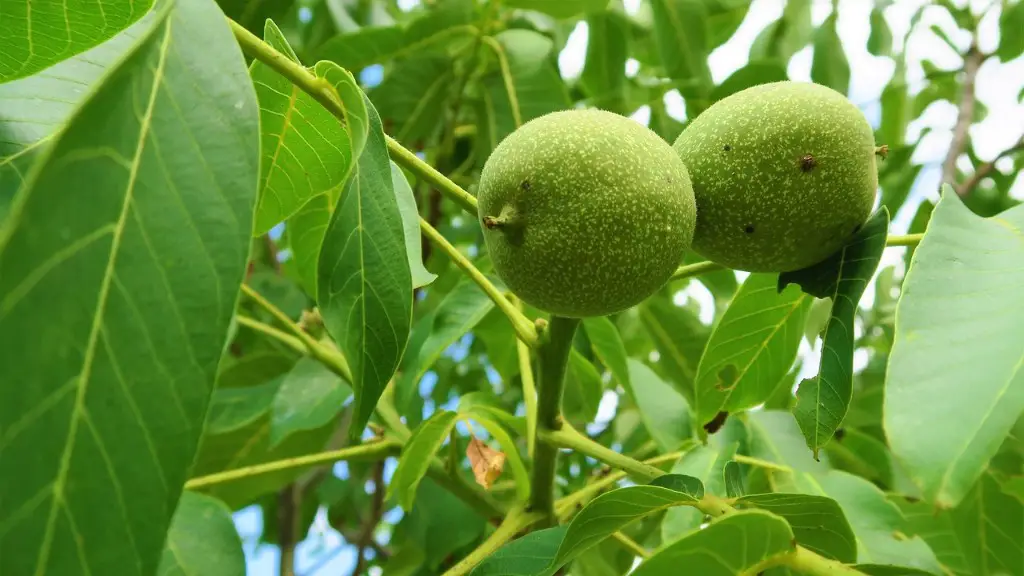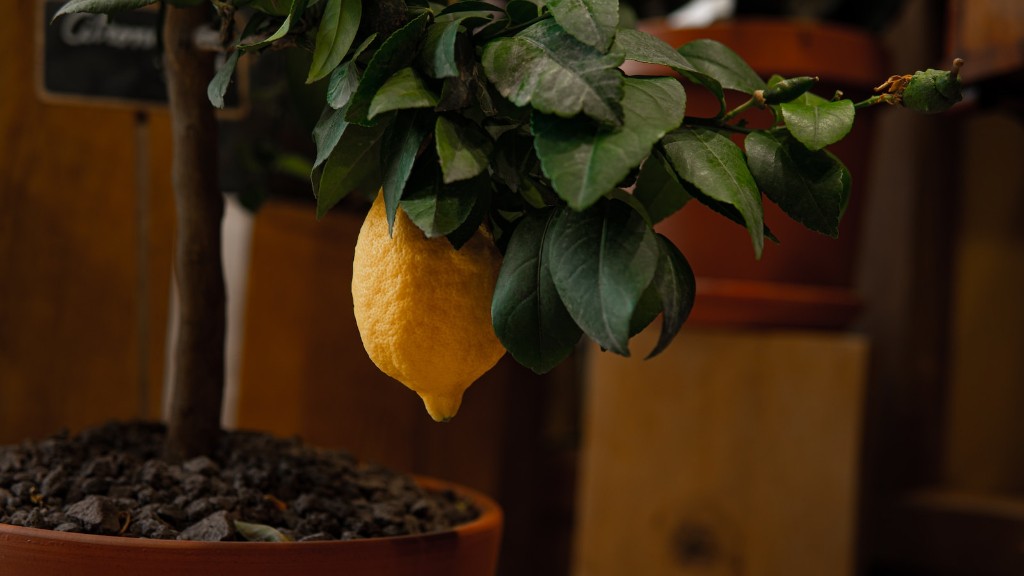The avocado tree is an ancient fruit and is considered an important food crop worldwide. It is native to Mexico, Central America and parts of South America but has been introduced to many other temperate and tropical climates as well. Due to its versatility, high nutritional value, and delicious flavor, avocados are one of the most popular fruits today.
Planting an avocado tree is relatively easy, but the conditions necessary for a healthy tree must be taken into account. For the best results, the tree should be planted in a sunny, well- drainage, and warm location. The soil should have enough depth and fertility for the root system to grow, as well as good aeration. pH should be between 6.0-7.0.
When it comes to planting, two methods can be used: planting a seed or planting a tree grafted onto a pre-existing rootstock. Furthermore, the choice of whether to plant an avocado tree outdoors or indoors is a matter of personal preference. However, when planting outdoors, it is important to ensure that there is enough space between other trees or shrubs in order to allow the avocado tree to grow properly.
When planting the tree, the trunk should be just above ground level. This will ensure that the tree is able to establish healthy roots. Additionally, it is important to make sure that the surface of the soil is not raised too much, as this will cause the roots from the rootstock to be lifted by the surface soil. Watering should be done adequately but not too much. The tree should receive about 1 inch of water each week.
The care of the tree is just as important as the planting itself. Regular pruning should be done to encourage proper growth. The tree should also be mulched. This will help to protect the roots from cold, retain moisture in the soil, and inhibit weeds. It is also important to fertilize the soil each year, as this will increase the yield of the avocado tree.
Avocado trees are resilient and easy to grow, requiring little additional care. However, it is important to ensure that all the conditions for a healthy tree are present. If done correctly, an avocado tree should bear fruit within two to three years. A well taken care of tree should last for many years and provide delicious and nutritious fruit.
Fertilizing an Avocado Tree
Avocado trees require regular fertilizer evaluations, particularly during the first year, in order to support proper growth and development. The fertilizer should be applied at intervals of every three to four months in order to make sure that the nutrient levels in the soil remain adequate. It is also important to use fertilizers specifically designed for avocado trees. These fertilizers are usually rich in nitrogen, phosphorous, and potassium, which are essential for optimal tree development.
When applying fertilizer, it is important to make sure that it is not over-applied. Too much fertilizer will cause excessive vegetative growth, reduce fruit yield, and introduce harmful levels of salts and other nutrients into the soil. It is best to follow the manufacturer’s instructions on how much fertilizer to apply and how often.
Fertilizing an avocado tree is not complicated, as long as the right fertilizer is used and applied according to the directions. It is an important part of the tree’s care, ensuring that it has the sufficient amount of nutrients to develop and bear fruit.
Pruning an Avocado Tree
Pruning an avocado tree is an important part of its care. Pruning stimulates new growth and helps to shape the tree. It helps to remove smaller or dead branches and encourages blooming and fruiting. Pruning should be done in the early spring or late winter and should involve the removal of only 10-15% of the branches.
When pruning, it is important to use clean and sharp cutting tools. It is best to cut back the branch at the point of its intersection with another branch or the stem. It is important to keep in mind that, when pruning, one should try to achieve better structure and shape, essential for the health of the tree and for a larger fruit yield.
Additionally, it is recommended to use careful pruning techniques to remove damaged branches and limbs, as this will reduce disease and strengthen the treeitself. Pruning should also be done carefully, to avoid excessive woody growth, and only the branches that are dead, diseased, or hanging should be removed.
Pruning an avocado tree is relatively easy and can be done by a novice gardener. It is an essential part of the tree’s care and should be done regularly, particularly in the winter, to ensure a healthy tree and good yields.
Harvesting Avocados
When it comes to harvesting avocados, timing is key. The timing will depend on the variety of the tree, but it’s generally between July and December. A good indication of when the fruit is ripe is when it starts to get soft. Another method is to gently tug on the fruit to see if it easily comes off the stem.
It is important to remember to use a ladder or a pole if necessary, in order to safely reach the fruit. Additionally, the avocados should be handled carefully, as any rough handling can damage the fruit. Once the avocados have been collected, the ripening process can be sped up by leaving the fruit in a paper bag for a few days.
Harvesting avocados from a tree is a rewarding process. Once the avocados have been picked, they can be used in a variety of recipes, including salads, sandwiches, dips, and more. They are a nutritious and delicious snack that can be enjoyed all year round.
Protecting an Avocado Tree from Pests
Avocado trees are susceptible to a variety of pests, including nematodes, whiteflies, and mites. These pests can cause diseases, root damage, and poor fruit yield. In order to protect the tree, it is important to take preventive measures.
The first step is to ensure that the tree has adequate nutrition and water. Appropriate fertilizers should be used and the soil should be kept moist. Additionally, it is important to monitor the tree’s leaves and branches: if any pest infestation is spotted, the tree should be treated with the appropriate insecticide.
Avocado trees are also prone to fungal infections. Foliar spray treatments should be used in order to prevent the formation of fungal spores. Finally, the tree should be monitored for signs of disease and the soil should be tested for any imbalance in the pH level.
Pest infestations can be a nuisance and, if not handled properly, can cause damage to the tree. Taking preventive measures and monitoring the tree regularly is the best way to protect it from pests.
Grafting an Avocado Tree
Grafting is a cultivation method that has been used for centuries. The process involves the insertion of a cutting of one tree into the bark of another. This creates a more vigorous and productive tree, with the new tree inheriting the characteristics of both the host tree and the scion.
When it comes to avocado trees, grafting is a common method. It is best done in late winter or early spring. The scion should come from a healthy two-year-old avocado tree and should be of the same variety as the host tree. Additionally, it should be cut at an angle and inserted beneath the bark of the host tree.
Grafting should be done carefully, as any rough handling or incorrect insertion may lead to failure. Additionally, the graft should be secured with a rubber band and covered with wax or grafting compound. This will encourage the cutting to grow and fuse with the host tree.
Grafting is a simple yet effective way to increase the yield of an avocado tree. When done correctly, it can produce a healthier, more productive tree.
Transplanting an Avocado Tree
Transplanting an avocado tree can be a stressful and difficult process, but with the right preparation, it can be done successfully. The most important step is to choose the right site and ensure that the soil conditions are suitable. The area should be sunny, with good drainage and a well-aerated soil.
When it comes to the transplanting process, it is important to ensure that the tree is watered regularly before and after the transplantation. During the digging process, the roots should be handled as gently as possible to avoid damage. After the digging, the hole should be carefully filled with soil and mulch. Watering should be done adequately and regularly, particularly during the first year.
Transplanting an avocado tree can be a daunting task, but with careful preparation and care it can be done successfully. The result will be a healthy and productive tree that can yield delicious fruit for many years to come.



